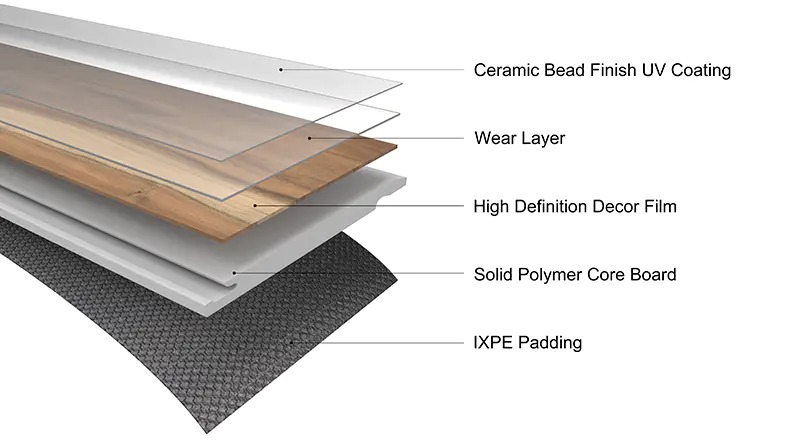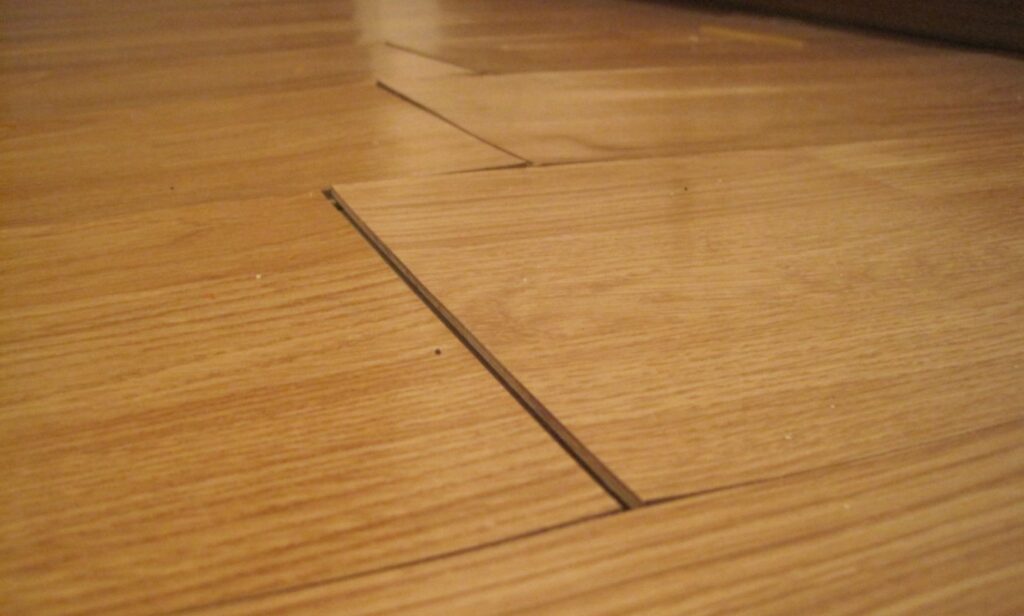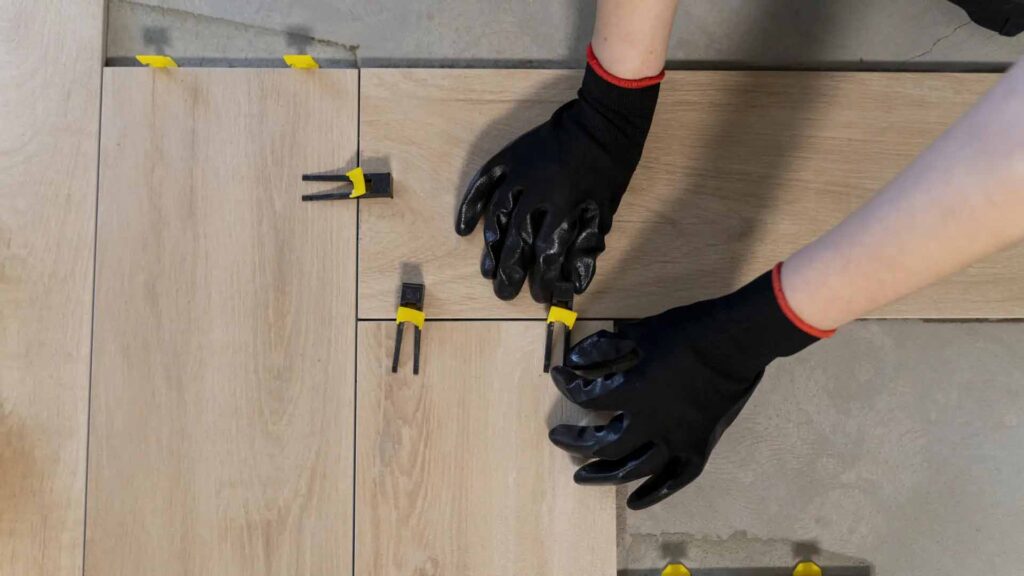SPC (Stone Plastic Composite) flooring has become a popular choice in residential, commercial, and industrial spaces due to its durability, water resistance, and aesthetic appeal. However, with any flooring material, it’s important to understand how it responds to environmental conditions. One common concern is whether SPC flooring expands or contracts over time, particularly when exposed to changes in temperature or humidity.
SPC flooring is generally stable, but it can expand or contract slightly when exposed to extreme temperature changes or excessive moisture. Understanding the factors that contribute to expansion and following proper installation practices can help prevent issues.
In this guide, we’ll explore the characteristics of SPC flooring, investigate what causes it to expand or contract, and provide tips on how to install and maintain your flooring to avoid expansion-related problems. If you’re considering SPC flooring for your next project, read on to discover how to keep your floors looking their best.
1. What is SPC Flooring Made of?

SPC flooring is composed of several layers that make it one of the most durable and stable flooring options available today. Understanding the materials used in its construction will help explain why it behaves the way it does under different conditions.
SPC flooring is made of four layers: a wear layer, a vinyl layer, a stone composite core, and a backing layer. The stone composite core provides rigidity and stability, making SPC flooring resistant to expansion or contraction in most conditions.
- Wear Layer: This top layer protects the floor from scratches, stains, and wear. It is transparent and typically made from a durable polyurethane or vinyl material.
- Vinyl Layer: Below the wear layer, the vinyl layer gives the flooring its design and aesthetic appeal. It can mimic the look of wood, stone, or other materials, and it’s flexible enough to adapt to different environments.
- Stone Composite Core: The core of SPC flooring is made from a mixture of limestone and PVC, which provides the floor with its rigid structure. This core is what makes SPC flooring more stable than other types of vinyl flooring, like WPC (Wood Plastic Composite).
- Backing Layer: This bottom layer provides additional stability and moisture resistance. It helps reduce the impact of subfloor imperfections and adds to the overall durability of the floor.
| Layer | Material | Purpose |
|---|---|---|
| Wear Layer | Polyurethane or vinyl | Protects the surface from damage |
| Vinyl Layer | PVC and other polymers | Provides design and aesthetic flexibility |
| Stone Composite Core | Limestone and PVC | Adds rigidity, durability, and stability |
| Backing Layer | Foam or cork | Provides moisture resistance and cushioning |
2. Does SPC Flooring Expand or Contract?

SPC flooring is generally known for its stability compared to other types of flooring, such as traditional wood or laminate. However, all flooring materials can experience some level of expansion or contraction when subjected to extreme environmental conditions.
While SPC flooring is highly stable, it can expand or contract slightly due to changes in temperature and humidity. However, the degree of expansion is minimal compared to other flooring materials, making SPC a reliable choice for many spaces.
- Temperature Sensitivity: SPC flooring can expand or contract with changes in temperature. Extreme heat can cause the material to expand slightly, while cold temperatures can cause it to contract. However, this effect is minimal and usually not noticeable unless the temperature variation is extreme.
- Humidity and Moisture: High humidity or moisture levels can cause SPC flooring to expand slightly, as the vinyl material absorbs some moisture. However, the stone composite core helps reduce the impact of moisture, making SPC flooring less prone to expansion compared to other materials like hardwood or laminate.
- Installation Impact: Proper installation can mitigate the effects of expansion. Leaving an expansion gap around the perimeter of the room allows the floor to expand and contract naturally without causing damage.
| Environmental Factor | Effect on SPC Flooring | Solution |
|---|---|---|
| Temperature | Minor expansion or contraction | Install in a climate-controlled space |
| Humidity | Slight expansion with moisture | Leave expansion gaps during installation |
| Improper Installation | Warping and buckling | Ensure proper installation and acclimation |
3. Which Factors Influence the Expansion or Contraction of SPC Flooring?

SPC flooring’s response to environmental factors like temperature and humidity is influenced by several factors, including the specific materials used and the installation process.
The main factors that influence the expansion or contraction of SPC flooring include temperature fluctuations, humidity levels, the quality of the material, and the installation process.
- Climate and Location: The region where you live plays a significant role in how SPC flooring behaves. Areas with high humidity or extreme temperature changes may experience more noticeable expansion or contraction, particularly if the floor isn’t installed with the proper precautions.
- Subfloor Condition: A poorly prepared subfloor can contribute to flooring issues, including expansion or contraction. Ensuring the subfloor is level, dry, and stable is crucial for maintaining SPC flooring’s stability.
- Material Quality: The quality of the SPC material itself will determine how it reacts to environmental changes. Higher-quality SPC flooring tends to have better resistance to expansion and contraction, as it uses better manufacturing processes and more advanced materials.
| Factor | Effect on SPC Flooring | Recommended Action |
|---|---|---|
| Climate | Expansion or contraction in extreme conditions | Choose climate-appropriate materials |
| Subfloor Condition | Impact on stability and flooring performance | Prepare subfloor properly |
| Material Quality | Higher-quality SPC resists expansion better | Choose reputable SPC manufacturers |
4. How to Properly Install SPC Flooring to Prevent Expansion Issues?

Proper installation is essential for ensuring that your SPC flooring remains stable over time and does not expand or contract in undesirable ways.
Installing SPC flooring correctly is key to preventing issues related to expansion. This includes acclimating the flooring to the room’s temperature, leaving adequate expansion gaps, and ensuring a level and dry subfloor.
- Acclimation: Before installation, acclimate the SPC planks by letting them sit in the room where they will be installed for 24–48 hours. This helps the flooring adjust to the room’s temperature and humidity levels.
- Expansion Gaps: Leave a gap around the perimeter of the floor (usually 1/4 to 1/2 inch) to allow for natural expansion and contraction. This gap should be covered with baseboards or trim to maintain a clean appearance.
- Subfloor Preparation: Ensure the subfloor is clean, dry, and level. Any imperfections or moisture can lead to problems with the installation, making the flooring more prone to expansion.
| Installation Tip | Action | Purpose |
|---|---|---|
| Acclimate Flooring | Let the planks adjust to room conditions for 24–48 hours | Prevents expansion post-installation |
| Expansion Gaps | Leave gaps around the perimeter | Allows for natural expansion and contraction |
| Subfloor Preparation | Ensure subfloor is dry and level | Ensures proper adhesion and stability |
5. Are There Specific Conditions That Cause SPC Flooring to Expand?

Certain conditions can exacerbate the expansion of SPC flooring. Understanding these conditions is essential for preventing issues.
SPC flooring is most likely to expand in areas with high humidity, extreme heat, or improper installation. Avoiding these conditions can help preserve the integrity of your floor.
- High Humidity: Areas with high humidity, such as bathrooms or basements, can cause the flooring to expand slightly. Using a dehumidifier and ensuring proper ventilation can help mitigate this effect.
- Extreme Heat: Areas near windows or heat sources may experience significant temperature fluctuations, leading to slight expansion. Installing window coverings or using fans to regulate temperature can help reduce exposure.
- Poor Installation: If the expansion gap is too small or if the subfloor is not adequately prepared, the floor is more likely to expand and contract unevenly. Ensuring proper installation practices can help reduce these issues.
| Condition | Impact on SPC Flooring | Solution |
|---|---|---|
| High Humidity | Causes expansion of the flooring | Use dehumidifiers, improve ventilation |
| Extreme Heat | Leads to slight expansion or warping | Install in areas with temperature control |
| Poor Installation | Leads to uneven expansion and contraction | Follow proper installation practices |
6. How Can You Prevent or Address SPC Flooring Expansion?
If you notice that your SPC flooring is expanding, there are several methods you can use to address the issue before it worsens.
To prevent SPC flooring expansion, control the indoor climate, install the flooring correctly, and maintain proper humidity levels. In case of expansion, consult a professional for adjustments.
- Climate Control: Keeping your home or building at a consistent temperature and humidity level can significantly reduce the risk of expansion. Avoiding drastic temperature changes will help keep your flooring stable.
- Regular Maintenance: Inspect your SPC flooring periodically to check for any signs of expansion or warping. If you notice issues, it’s best to address them early before they become serious problems.
- Professional Help: If the expansion is significant, consider consulting a professional installer or flooring expert to assess and correct the issue.
| Prevention Tip | Action | Reason |
|---|---|---|
| Climate Control | Keep temperature and humidity stable | Minimizes the risk of expansion |
| Regular Inspection | Check for signs of expansion regularly | Catch issues early before they worsen |
| Professional Help | Consult a professional installer | Ensure proper correction of issues |
7. Does SPC Flooring Require Maintenance to Avoid Expansion Problems?
SPC flooring doesn’t require excessive maintenance, but taking care of it properly can help prevent issues related to expansion.
Regular maintenance, such as cleaning, inspecting for damage, and ensuring proper installation, is key to preventing expansion or contraction issues in SPC flooring.
- Cleaning: Keep your SPC flooring clean and free from dirt or moisture that could affect its performance. Use a damp mop and avoid soaking the floor.
- Inspection: Regularly check for any signs of buckling or expansion, especially around the edges. If you notice any unusual changes, take action promptly.
- Environmental Control: Maintain a stable indoor environment to reduce the chances of temperature or humidity-induced expansion.
| Maintenance Task | Action | Reason |
|---|---|---|
| Cleaning | Clean with a damp mop | Prevents moisture from accumulating |
| Inspection | Check for any signs of expansion or warping | Catch issues early to prevent long-term damage |
| Environmental Control | Maintain consistent temperature and humidity | Keeps SPC flooring stable |
Conclusion
SPC flooring is a durable and stable option, but like all flooring materials, it can experience slight expansion or contraction depending on the environment. By understanding the factors that influence its behavior and following proper installation and maintenance guidelines, you can ensure that your SPC flooring remains in excellent condition for years.
At Kinwin, we specialize in high-quality, custom SPC flooring solutions tailored to your needs. If you’re looking to install SPC flooring in your home or business, reach out to us for a personalized quote today!


